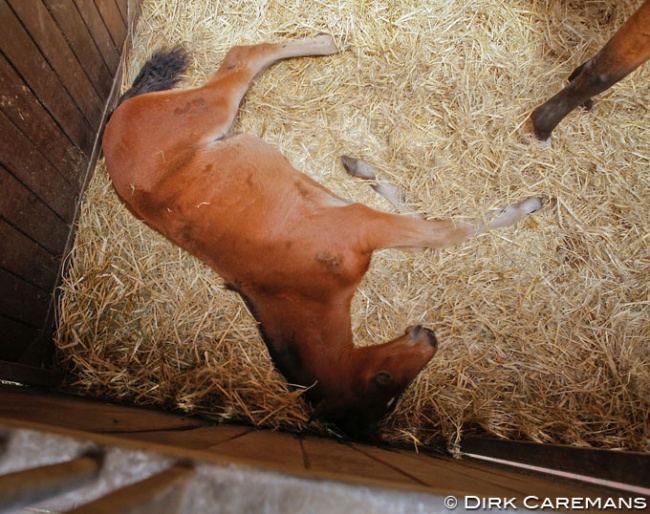
Horses produce a large amount of ammonia each day, which can be hazardous to animals and their caretakers.
Researchers Lydotes and Uricchio of the University of Massachusetts carried out a study which looked at different types of commonly used bedding materials used in the Northeast United States and evaluated the levels of ammonia exposure with each material.
The Study
With current equine management practices, humans and horses are potentially exposed to hazardous levels of ammonia on a daily basis.
The Occupational Safety and Health Administration (USA) has declared over 50 ppm of ammonia unsafe for workers; however, popular show barns have been discovered to have 450 ppm.
Most domesticated horses are stalled indoors which creates a large ammonia build up. The average 1,000-pound horse produces 50 pounds of waste and 2.4 gallons of urine every day. The type of bedding within the stall can contribute to the ammonia levels both horse and human are exposed to, leading to increased health risk.
This study investigated the difference in ammonia exposure over a 16-hour time period using four different types of popular equine beddings: coarse wood shavings, sawdust, wood pellets, and straw. Ammonia exposure for horse and human was tracked using ChromAir Ammonia Badges, which measure ammonia levels in the air (exposure range 4 - 300 ppm/hr) for up to 16 hours. It was hypothesized that the most absorbent bedding types (wood pellets) would have lower ammonia exposure ranges than less absorbent bedding types (straw). The absorption rate and ammonia exposure of the four bedding types was investigated in a controlled laboratory setting.
A uniform volume (3L) of each type of bedding was sealed in an airtight container and 100 mL of urine (specific gravity 1.046) was added. Absorption and anhydrous ammonia were recorded at 1, 2, 3, and 16 hours. Ammonia exposure was also investigated in a practical setting. A 10x10 stall with an impervious asphalt floor covered with rubber mats was stripped and limed to neutralize any residual ammonia. A uniform volume (950L) of bedding was added and a horse was stalled for 16 hours with mature grass hay and two 20-L water buckets (average water intake 19.32 L, average urine specific gravity 1.027).
The ChromAir Ammonia Badge was braided into the horse’s mane and ammonia exposure was recorded at 1, 2, 3, and 16 hours. Human ammonia exposure was also recorded for the duration of stall cleaning (average exposure time of 15 minutes). This was repeated for each of the four types of bedding.
The Findings
A correlation was found between different types of bedding, absorption rates, and level of ammonia gas exposure. The bedding types with the highest absorption (wood pellets, coarse shavings) had the lowest ammonia readings of 4ppm/hr. The bedding type with the lowest absorption (straw) had the highest ammonia readings of 8-20ppm/hr. In addition, straw was the only bedding type with a measurable human ammonia exposure reading during stall cleaning.
Conclusion
The results of this study will help decrease ammonia exposure and in turn decrease the incidence of respiratory diseases in both horses and humans.
Wood pellets were found to be the most absorptive bedding type and had the lowest level of ammonia exposure. Straw was found to be the least absorptive bedding type and had the highest level of ammonia exposure.
Selecting a bedding that reduces ammonia exposure can lead to improved animal welfare and respiratory health.
-- abstract from 2019 ISES conference
Photo © Dirk Caremans
Related Links
Nocturnal Sleeping and Eating Patterns of Horses on Straw and Shavings
Relation Between Foals' Standing up Behaviour and Prevalence of Osteochondrosis
Cribbing and Weaving, Stereotypies of Bored Horses